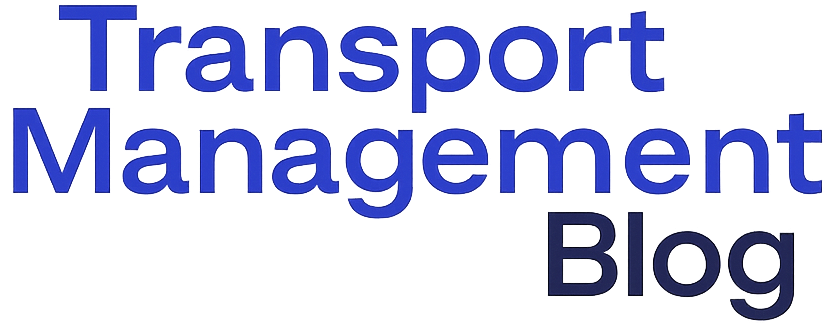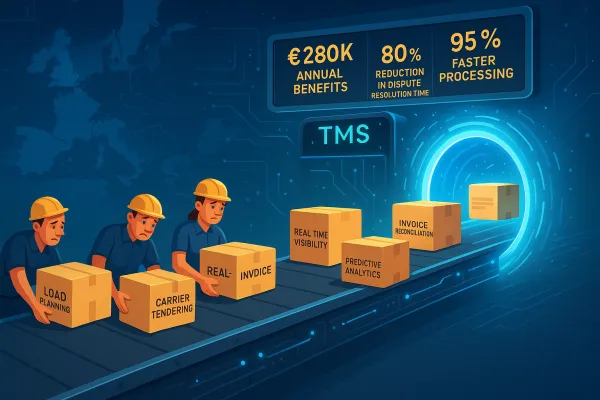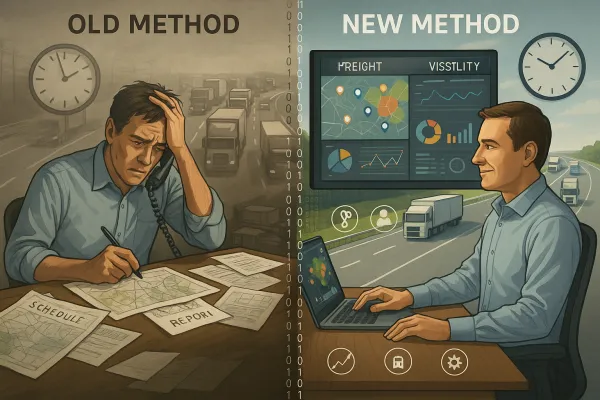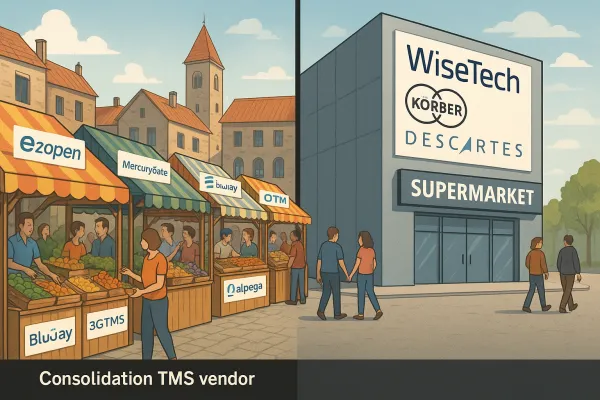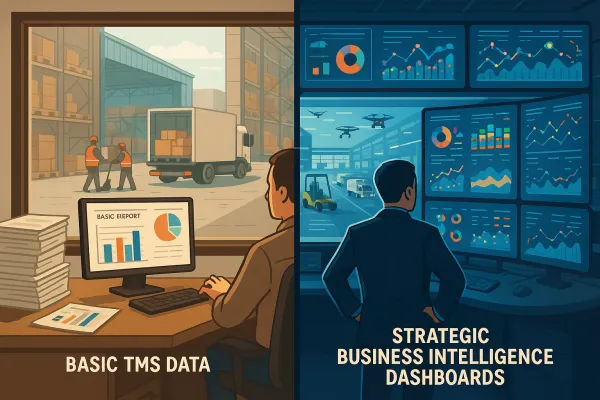Shipper TMS Procurement: The 6 Metrics I’d Put in Every RFP

Transport Management Systems (TMS) have moved from “nice-to-have” to critical infrastructure for European shippers. The problem is that most RFPs (Request for Proposal) still focus on feature checklists, rather than the metrics that actually determine value.
If you’re running TMS procurement for a mid-to-large manufacturer or retailer, here are six metrics I would always include in an RFP (after twelve years on both the shipper and logistics-provider side).
1. Carrier Connectivity Rate
How quickly and seamlessly can the TMS connect you to your carriers, and how many are already integrated?
- Why it matters: A TMS without carrier coverage is a dashboard without data.
- How to measure: % of your current carriers already live, average onboarding time for a new carrier.
- Benchmarks: Best-in-class platforms can onboard new carriers in days, not months.
2. Time-to-Value (Implementation Speed)
Forget vague “implementation services.” What’s the real lead time until your team can book the first load?
- Why it matters: European shippers often run procurement cycles under pressure. A 6–12 month rollout can already miss market shifts.
- How to measure: Average time (in weeks) to go live for a mid-sized customer with 10–20 carriers.
- Benchmarks: Agile cloud-native TMS players report 6–12 weeks vs legacy enterprise systems at 6–12 months.
3. User Adoption Rate
A TMS is only as good as the people using it. Adoption is a leading indicator for ROI.
- Why it matters: Transport planners under time pressure will revert to email and Excel if the system isn’t intuitive.
- How to measure: Post-implementation adoption (% of bookings actually made through the TMS), plus NPS/user satisfaction.
- Benchmarks: Look for >80% adoption within the first year.
4. Process Automation Coverage
How much manual work is eliminated?
- Why it matters: Every manual booking, track & trace call, or invoice check is cost leakage.
- How to measure: % of shipments auto-booked, % of invoices auto-matched, % of status updates automated.
- Benchmarks: The best-performing TMSs automate 50–70%+ of routine transactions.
5. Data Quality & Reporting Latency
- Why it matters: S&OP, inventory, and customer service depend on reliable ETAs.
- How to measure: Average latency of status updates (instant vs minutes vs hours), % of shipments with complete milestone data.
- Benchmarks: Top systems achieve sub-hour reporting latency on key milestones.
6. Total Cost Transparency
License fees are only half the picture.
- Why it matters: Implementation, carrier fees, API costs, and change requests add up. A “cheap” system can become expensive over five years.
- How to measure: Ask vendors to model five-year TCO, including onboarding, integration, and expected support costs.
- Benchmarks: Cloud-native SaaS systems tend to offer more predictable TCO than on-premise or heavily customized legacy suites.
TMS Vendor Landscape — and Where to Look
There are several credible options in the European market:
- Transporeon (long-standing network with deep carrier integrations)
- Alpega (strong for multi-national complex shippers)
- Blue Yonder (enterprise supply chain suite with TMS component)
- Oracle NetSuite/Infor/SAP modules (robust & expensive but slower to deploy)
- Cargoson (cloud-native, lighter-weight and fast to onboard, gaining popularity among mid-sized European manufacturers, but not suitable for 3PL/4PL and is still a young company)
Read more: Transport Management software providers
👉 The point of an RFP is not to crown a “winner” from the start. Instead, these metrics let you compare apples with apples. And while some vendors excel in network depth, others in usability or agility, the subtle differentiator often comes down to how fast and painlessly you can actually get to value.
TL;DR: What to Ask in a Transport Management RFP?
Features change, buzzwords evolve, but these six metrics stay relevant. They cut through sales demos and put the focus back where it belongs:
- Will your carriers connect quickly?
- Will your team adopt the tool?
- Will you see ROI within quarters, not years?
Put these questions at the center of your RFP, and you’ll not only select a system, but you’ll also future-proof your transport operations.
